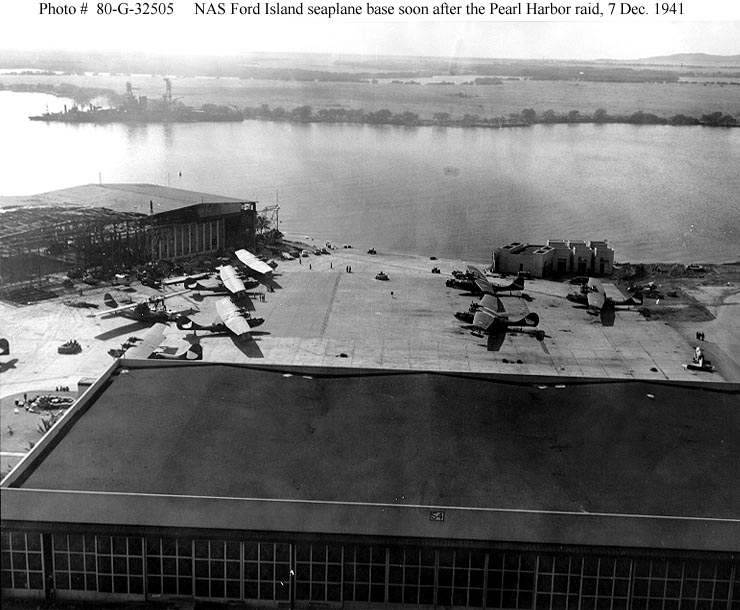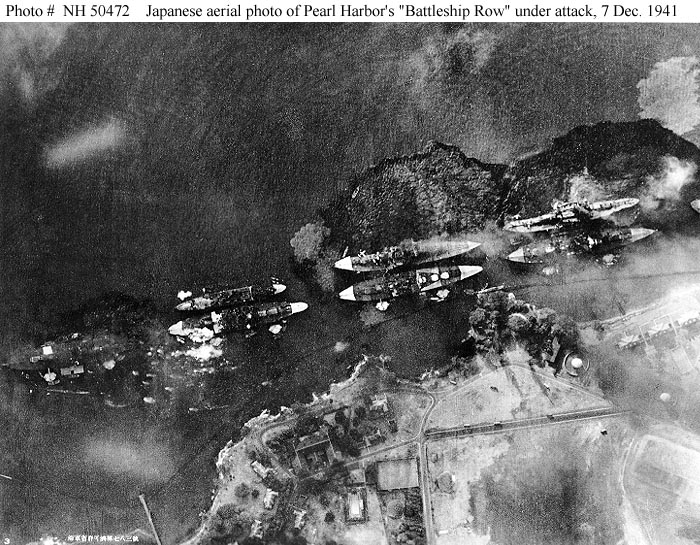
Maybe Section A? On Pearl Harbor Day, it is always good to go to primary sources. In the air with the Enterprise's CAG (notice the first person),
At 0615 December 7, 1941 I took off from Enterprise, whose position at that time was approximately 215 miles due west of Oahu, with a mission of searching a sector 058°-095° true for a distance of 150 miles, and then to proceed to Ford Island. Ensign P.L. Teaff, USN in airplane 6-S-2 accompanied me. My passenger was Lieut-Comdr. Bromfield Nichol, USN, Tactical Officer attached to the staff of Commander Aircraft, Battle Force, who had been ordered to report to the Commander-in-Chief, Pacific Fleet immediately after my arrival at Ford Island.
At about 0720 I sighted a tanker to starboard, proceeding on an easterly course, which upon investigation proved to be the Pat Doheny of Los Angeles, belonging to the Richfield Oil Co. Continuing on my track of 090° I sighted and passed the U.S.S. Thresher accompanied by the U.S.S. Litchfield at about 0740. At about 0810 I passed Kaena Point abeam to port distance 20 miles. At 0820 passed Barber's point to seaward and at this time I noticed approximately a squadron of planes circling Ewa Field in column. Believing them to be U.S. Army pursuit planes I gave them a wide berth, decreasing my altitude to about 800 feet and continued toward Ford Island Field. At a point mid-way between Ewa Field and Ford Island I noticed considerable "AA" fire ahead. At almost the same instant I was attacked by Japanese planes from the rear without warning. Recognizing the insignia of one plane that had completed a dive on me – I immediately dove toward the ground zig-zagging. My passenger did not have sufficient time to man the free gun. My fixed guns were loaded and charged but I had no opportunity to use them. The planes that attacked me appeared to be low-wing monoplane fighters with retractable landing gear. My wing man was attacked at the same time but was not hit and stayed with me, circling low over a cane filed to the North of Pearl City. It was immediately evident that I was under AA fire regardless of which direction I went. I did not have sufficient fuel to return to the ship had I been able to get away from the island. Hoping that I would be recognized as friendly I decided to make a low approach to Ford Island Field and land – I had no alternative it seemed. From this point on until I had landed I was subjected to heavy AA fire from ships and shore batteries in spite of making recognition maneuvers and the fact that my wheels and flaps were down for landing. My wing man turned away just prior to landing. I could not communicate with the Ford Island Field control tower. I estimate my time of landing to have been about 0835. Inspection of the plane revealed several bullet holes through the wings but no serious damage.
... Lieut. C.E. Dickensen, USN, Scouting Squadron Six, after having been attacked by superior numbers of Japanese planes and under constant AA fire from the ground was forced to bail out, his plane having caught fire. In the midst of the third attack on Pearl Harbor, he made his way to Ford Island Field and immediately upon arrival there manned another plane and participated in the 175 mile search flight. At this time his ordeal of having been shot down was not known to his superiors and no mention of the same was made by him to anyone at the time, he thus displaying a superb courage, stamina, devotion to duty, unexcelled logic and coolness in action. It is requested that this officer be given an official commendation for his performance of duty.
 On board ship with ENS Flannigan on the USS Arizona.
On board ship with ENS Flannigan on the USS Arizona.About 8 o'clock I heard the air raid siren. I was in the bunk room and everyone in the bunk room thought it was a joke to have an air raid on Sunday. Then I heard an explosion. I was undressed. I climbed into some khaki clothing and shoes. Then the General alarm bell went.And the USS Tautog was ready to bring the fight to the enemy.
I made for my GQ [general quarters] station. I don't remember any word passed over the speaker system. My station was the lower room of turret 3. Just as the men and I go down the ladder leading to the passageway between the lower rooms of turret 3 and 4 a bomb exploded. The lights went out. It seemed to be on the third deck, starboard side between turrets 3 and 4. When that bomb hit, it made a whish with a gust of hot air and sparks flew. There followed a very nauseating gas and smoke immediately afterwards. Before this time, condition ZED had been set in the lower room of turret 3, and the men in the passage and I were unable to get out of the passageway. I beat on the door for some minutes before someone inside the turret opened the door. We got all the men that we could find in the passageway into the lower room, and then dogged down the passageway door. We were unable to dog down the door of the port passageway between 3 and 4 because it had been sprung by an explosion. The air in the turret was fairly clear for a while, but finally gas or smoke starting coming in. The men made quite a bit of confusion at first but they were very obedient when Ensign Field and I ordered them to keep quiet.

1. On 7 December, 1941 Tautog was moored at pier two U.S. Submarine Base manned by one section of Submarine Division Sixty-One relief crew. Tautog has returned from a 45-day patrol on 5 December and only one fourth of the regular crew was on board. At 0750 several men on deck observed three planes flying in the general direction of the U.S. Navy Yard from over AIEA fleet landing. When the first plane dropped a bomb and turned revealing the insignia, it was realized that an attack was being made. General Quarters was sounded immediately and about 0755 the first cal. .50 machine gun was brought into action. Torpedo planes, some of which passed very close astern of Tautog had commenced an attack on Battleships moored at Ford Island. At about 0758 the fourth plane in line burst into flames with a loud explosion when about 150 feet astern of Tautog. Tracers from the after cal. .50 machine gun and the starboard cal. .30 machine gun were going into the fuselage of this plane at this time. U.S.S. Hulbert was also firing at this plane. It is certain that it was hit repeatedly by Tautog, no other ships in the vicinity had opened fire. Somewhat later in this attack a second plane was brought down in the same general area but at longer range. Tautog was firing at this plane but it is believed that it was hit by Hulbert. Other attacks were too distant for effective machine gun fire from Tautog.
2. In accordance with reference (a) the following is reported:
1. Battle stations were manned, the ship was rigged for diving, completely sealed except for ammunition access and made ready for getting underway.
2. One plane was shot down.
3. No losses or damage.
4. It is considered that the situation was recognized promptly and the available armament brought into action expeditiously. Lieutenant W.B. SIEGLAFF, U.S.N. in charge of the relief crew section, assisted by Ensign R.F. STROUP U.S.N.R. and Ensign R.L. FARRAR, U.S.N.R., attached to Tautog handled the situation competently until return of the other ship's officers about 0830. Machine guns which brought down the plane were manned by:
MIGNONE, P.N. TM2c, U.S.N.
DIXON, I.H. GM1c, U.S.N.
FLOYD, W.E. EM1c, U.S.N.
5. Hulbert, moored at pier 1, U.S. Submarine Base, was the first vessel in the harbor observed to open fire. By 1000 all except 10 of the crew of Tautog was aboard. By 1700 the ship was fueled, and provisioned for extended operations with all of the crew aboard.









No comments:
Post a Comment